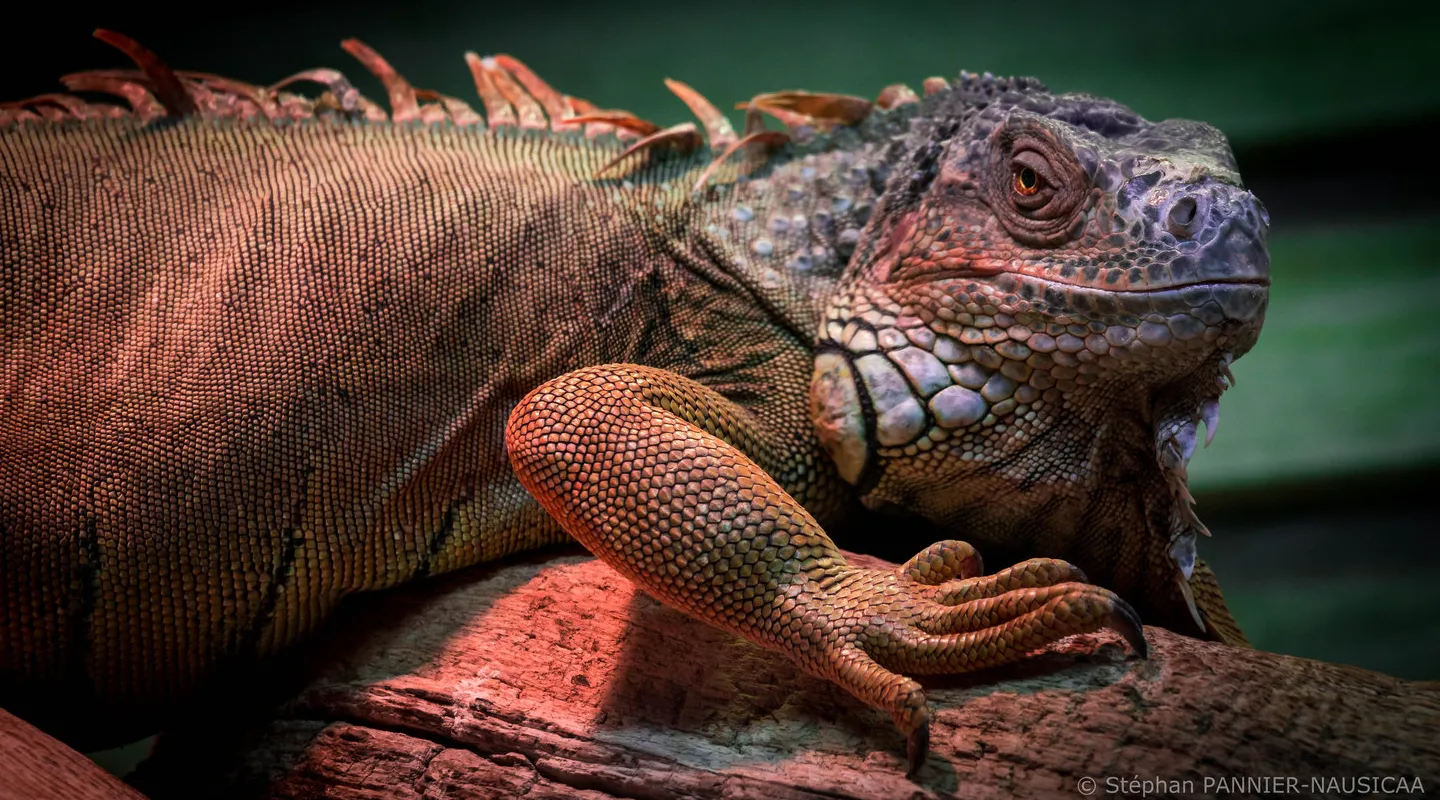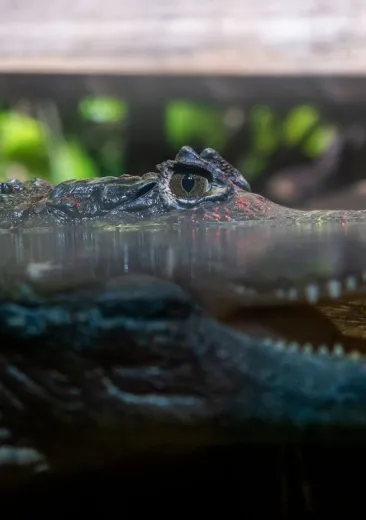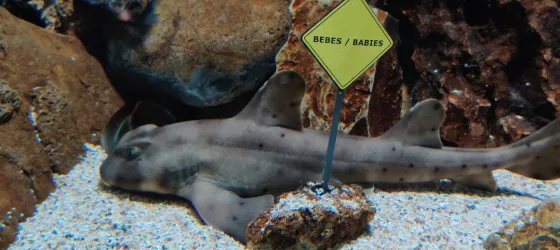It was introduced by humans to the Lesser Antilles and the Greater Antilles and threatens the endemic species of these islands, especially the Lesser Antillean iguana (Iguana delicatissima) which is facing critical extinction.

Identity card
Common Green Iguana
- Scientific name:
- Iguana iguana
- Family:
- Iguanidae
- Class:
- Reptilia
- Phylum:
- Chordata
- Year of description:
- Linnaeus, 1758
- IUCN Status:
- Least Concern
- CITES-status:
appendix II
- Distribution:
-
It is native to subtropical America.
- Habitat:
-
It is found in a humid equatorial climate, with a low temperature range and an annual average of 25°.
- Size:
In the wild, they can grow up to 2.5 metres long, including the tail.
- Diet:
-
Its diet is essentially vegetarian. It feeds on leaves from rain forest plants and also eats fruits and flowers.



















